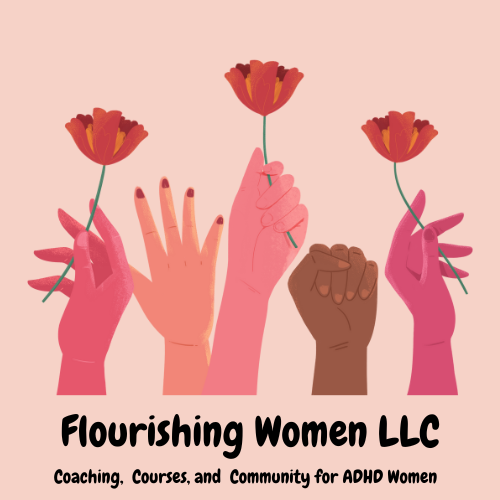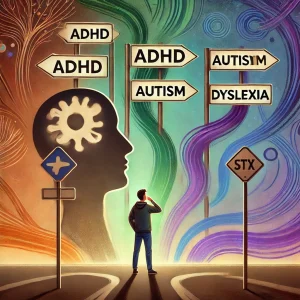Introduction
Autism is part of the natural spectrum of human neurodiversity. Yet autism in women and nonbinary people is often overlooked. For decades, most research and diagnostic tools focused on boys, creating stereotypes that did not reflect the lived experiences of many autistic women and gender-diverse individuals (MIT, 2022).
In recent years, more women and nonbinary people are receiving diagnoses. Still, most are diagnosed later in life, often in adolescence or adulthood. This means many spend years masking, misdiagnosed, or unsupported (Harrop et al., 2023).
This guide explores:
-
Why autism in women and nonbinary people is so often missed
-
Signs and patterns that look different from stereotypes
-
The personal cost of masking
-
Strengths autistic women and nonbinary individuals bring
-
Support strategies that affirm identity and wellbeing
👉 For the bigger picture, see our Neurodiversity 101 guide.
Why Autism in Women Is Often Overlooked
Gender bias in diagnostic tools
Most diagnostic frameworks were developed using boys as the standard. A Massachusetts Institute of Technology study showed that many autistic women and nonbinary adults would not qualify on these tools, even when they already had a clinical diagnosis.
Screening shaped by culture
The Autism Spectrum Quotient (AQ), a widely used self-report tool, works differently for women and nonbinary people. Belcher et al. (2023) found that responses often reflected cultural gender expectations, not actual differences in autistic traits.
Later diagnosis
On average, women are diagnosed 18 months later than men. Harrop et al. (2023) reported that late diagnoses, after age 13, are disproportionately female or nonbinary. Delays often mean years of distress, misdiagnosis, and lost support.
How Autism Looks Different in Women & Nonbinary People
Stereotypes about autism still reflect a “male model.” Women and nonbinary people often show different patterns.
| Stereotypes of Autism (Male-Focused) | Common Presentations in Women & Nonbinary People | Impact on Diagnosis & Support |
|---|---|---|
| Clear social withdrawal | Active but exhausted after socializing (camouflaging) | Misdiagnosed as social anxiety → Delayed recognition |
| Highly visible repetitive behaviors | Subtle stimming (tapping fingers, twirling jewelry) | Traits overlooked by teachers and clinicians |
| Narrow “unusual” interests (e.g., trains) | Intense “socially acceptable” interests (e.g., animals, literature) | Labeled as “normal hobbies” instead of autistic traits |
| Diagnosed in early childhood | Diagnosed later, often after misdiagnosis with anxiety or depression | Many remain unsupported for years |
Unique Barriers for Nonbinary People
Research on autism in nonbinary adults is still limited, but clear patterns are emerging:
-
Compounded stigma → Double invisibility: autism tools built for boys + gender diversity often ignored.
-
Delayed recognition → Like women, nonbinary people are often misdiagnosed with anxiety or depression first.
-
Identity stress → Managing gender stigma while masking autistic traits increases burnout risk.
-
Community strengths → Many nonbinary autistic people find resilience in queer and autistic communities where authenticity is valued.
10 Signs of Autism in Women That Often Go Missed
-
Masking and camouflaging → Appearing socially skilled but feeling drained inside.
-
Intense interests hidden under “normal” hobbies → Deep focus on animals, books, or shows.
-
Rehearsing conversations → Scripting what to say before calls or meetings.
-
Social exhaustion → Needing long recovery after interactions.
-
Subtle stimming → Fidgeting with rings, twirling hair, tapping fingers.
-
High empathy with overwhelm → Feeling others’ emotions so strongly it becomes draining.
-
Misdiagnoses first → Anxiety or depression labels given before autism is considered.
-
Sensory overload → Bright lights, fabrics, or background noise causing distress.
-
Late realization → Many women and nonbinary adults only discover autism after a child or peer is diagnosed.
-
Identity struggles → Years of asking “What’s wrong with me?” before realizing it’s autism.
Common Experiences
Autistic women and nonbinary people often share these experiences:
-
Sensory sensitivities to light, sound, or textures
-
Deep knowledge or passion areas, sometimes masked as “normal” hobbies
-
Social exhaustion after conversations and events
-
Misdiagnoses with anxiety, depression, or borderline personality disorder before autism is recognized
Masking and Its Costs
Masking means hiding autistic traits to appear “typical.”
-
Why it happens → To fit school, work, or cultural expectations, and to avoid stigma or rejection.
-
The cost → Long-term masking links to burnout, identity loss, and mental health struggles. Many women and nonbinary people describe a breaking point in adulthood when masking becomes unsustainable (Harrop et al., 2023).
This cycle of stigma → masking → burnout is not personal failure. It’s the result of environments that don’t accommodate.
Strengths in Autistic Women & Nonbinary People
Despite deficit-focused research, autistic women and nonbinary people describe meaningful strengths:
-
Deep focus and expertise in chosen interests
-
Integrity and honesty in relationships and work
-
Creative, original thinking that challenges convention
-
Empathy and sensory awareness, especially toward other marginalized groups
Research supports this. The Lancet Child & Adolescent Health (2023) calls for studies that highlight diversity and strengths, not only deficits.
Affirming Support Strategies
-
Earlier recognition matters → Late diagnosis links to poorer self-esteem and mental health, while earlier identification improves quality of life (Harrop et al., 2023).
-
Gender-aware assessments → Clinicians are developing tools that reflect female and nonbinary traits (MIT, 2022).
-
Safe spaces for unmasking → Peer support groups and affirming communities allow authenticity without judgment.
-
Self-accommodation practices → Building routines, sensory breaks, and quiet time preserves energy and wellbeing.
Frequently Asked Questions (FAQ)
What does autism look like in women?
Autism in women often involves masking, sensory sensitivities, social exhaustion, and deep interests that may appear “normal.”
What are signs of autism in nonbinary adults?
Nonbinary autistic adults often face late diagnosis, masking, and misdiagnosis. Traits include sensory overwhelm, strong interests, and social fatigue.
Why is autism underdiagnosed in women?
Because diagnostic tools were built around boys, many women and nonbinary people are missed until adolescence or adulthood.
Is autism in women a disability?
It depends on context. Under the social model of disability, people are disabled when environments fail to accommodate their needs.
Closing
Autism in women and nonbinary people is not rare. It has always been here, hidden under stereotypes and stigma. Research now confirms what autistic people have long said: the tools overlooked them, not the other way around.
Recognition opens doors to identity, belonging, and community.
👉 For a wider perspective, explore our Neurodiversity 101 guide.
References
-
-
Belcher, J., Ventola, P., & Wilson, L. (2023). Gender invariance in the Autism Spectrum Quotient. Autism Research, 16(10), 1886–1897. https://doi.org/10.1002/aur.3115
-
Harrop, C., Kim, S. H., & Lord, C. (2023). Are diagnostic rates of autistic females increasing? Journal of Child Psychology and Psychiatry, 64(2), 141–150. https://doi.org/10.1111/jcpp.13751
-
Massachusetts Institute of Technology (MIT). (2022, September 8). Studies show bias against women in standard autism screening tools. MIT News. https://news.mit.edu/2022/studies-autism-women-bias-0908
-
The Lancet Child & Adolescent Health. (2023). Autism research must reflect diversity to support strengths. The Lancet Child & Adolescent Health, 7(11), 731. https://doi.org/10.1016/S2352-4642(23)00221-3
-


